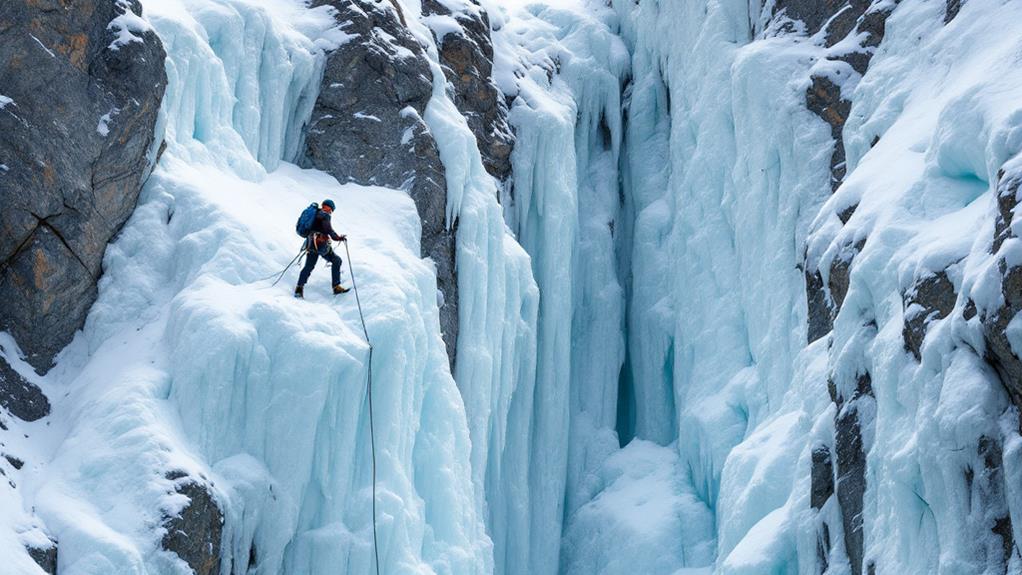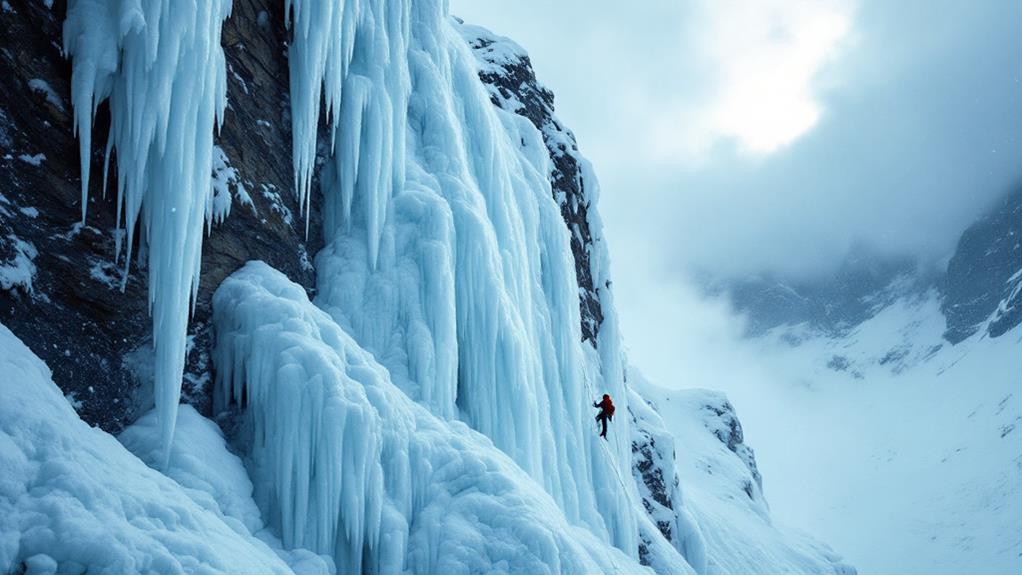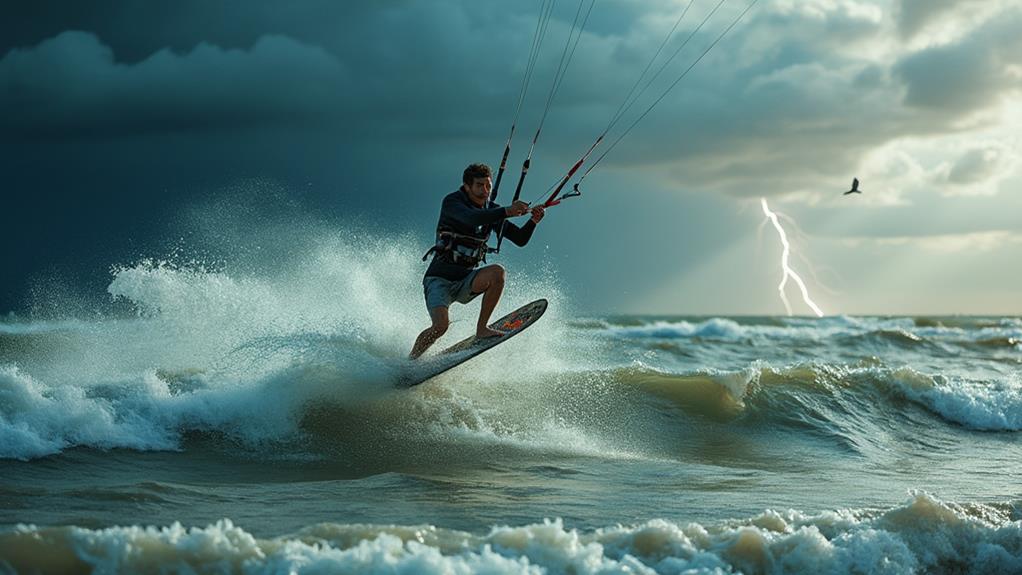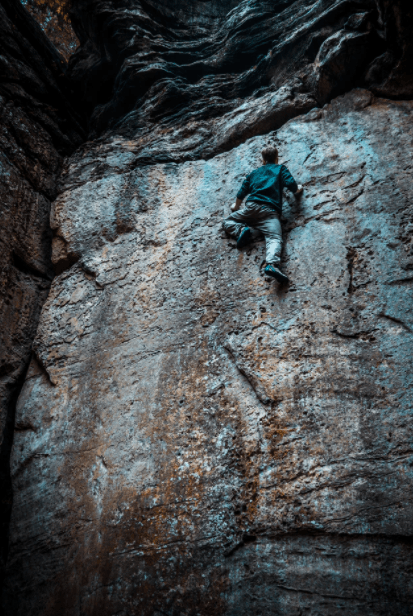How Risky Is Ice Climbing?

Ice climbing is a high-risk sport with significant hazards. You'll face dangers like falling ice, avalanches, equipment failure, and extreme cold. Proper training and specialized gear are crucial for your safety. While safety techniques can mitigate risks, accidents still occur at a higher rate than in rock climbing. Weather plays a major role, with sudden changes potentially altering climbing conditions rapidly. You'll need to master specific skills, maintain constant vigilance, and be prepared to adapt quickly. Even experienced climbers face substantial risks, making ice climbing more dangerous than many other outdoor activities. Understanding the full scope of challenges can help you better prepare for this intense sport.
Common Ice Climbing Hazards
Ice climbing plunges adventurers into a world of exhilarating challenges and potential dangers. As you scale frozen waterfalls and icy cliffs, you'll face numerous hazards that demand constant vigilance and respect for the environment. Proper training and experience are necessary to manage the risks involved in ice climbing.
Falling ice is a primary concern. Chunks of ice can break off unexpectedly, posing a serious threat to climbers below. You'll need to wear a helmet and stay alert for any signs of instability. Avalanches are another major risk, especially in mountainous terrain. Understanding ice formation and structure is crucial to identifying safe climbing routes.
Equipment failure can be catastrophic. Your ice axes, crampons, and ropes are lifelines, so inspect them regularly and replace worn gear. Hypothermia and frostbite are ever-present dangers in cold environments. Proper insulated and waterproof clothing is essential to protect against harsh winter conditions.
Crevasses hidden beneath snow can trap unsuspecting climbers. Always rope up when traversing glaciers. Finally, the physical demands of ice climbing can lead to exhaustion, increasing the risk of accidents. Maintain fitness, know your limits, and be prepared to turn back if conditions deteriorate or you're feeling overwhelmed.
Safety Equipment and Techniques
To mitigate the risks of ice climbing, you'll need to invest in specialized safety equipment and master essential techniques. Your gear should include a helmet, crampons, ice axes, and a sturdy harness. Don't forget proper winter clothing to protect against hypothermia and frostbite.
Learn to use your equipment effectively and practice on easier routes before attempting more challenging climbs. Proper ice axe placement and crampon techniques are crucial for maintaining stability and preventing falls. Always climb with a partner and use a reliable belay system.
Here are three key safety techniques you should master:
- Ice screw placement: Learn to identify solid ice and place ice screws correctly for secure anchors.
- Self-arrest: Practice stopping a fall using your ice axe in various positions and scenarios.
- Reading ice conditions: Develop the ability to assess ice quality and thickness to avoid unstable areas.
Accident Statistics and Analysis

While precise accident statistics for ice climbing are limited, available data suggests it's one of the riskier forms of climbing. A study by the American Alpine Club found that ice climbers face a higher rate of accidents compared to rock climbers. Most incidents occur due to falling ice, equipment failure, or human error.
You'll find that avalanches pose a significant threat, accounting for about 20% of ice climbing fatalities. Falling ice is another major hazard, causing approximately 30% of reported injuries. Equipment issues, such as ice screw failures or broken ropes, contribute to roughly 15% of accidents. Ice diving, a closely related extreme sport, also carries significant risks, including the potential for hypothermia and equipment failure.
When analyzing these statistics, you must consider the severity of injuries. Ice climbing accidents often result in more serious consequences due to the harsh environment and potential for long falls. Head injuries are particularly common, emphasizing the importance of proper helmet use.
It's crucial to note that many accidents go unreported, especially minor incidents. This underreporting may skew the overall risk perception. To get a clearer picture, you should combine official statistics with anecdotal evidence from experienced climbers and local climbing communities.
Training and Experience Requirements
Given the inherent risks of ice climbing, proper training and experience are paramount for safety. You'll need to invest significant time and effort to develop the necessary skills and knowledge before attempting challenging ice routes. Start with basic rock climbing and mountaineering courses to build a foundation in rope work, belaying, and safety techniques. Then, progress to specialized ice climbing instruction under the guidance of experienced professionals.
As you advance, focus on mastering these critical skills:
- Ice tool placement and removal
- Crampon technique and footwork
- Reading ice conditions and assessing stability
You should gain experience gradually, starting with easier routes and progressively tackling more difficult climbs. It's crucial to climb with more experienced partners who can mentor you and provide valuable insights. Aim to log at least 20-30 ice climbs before attempting advanced routes independently.
Remember that ongoing training and practice are essential to maintain and improve your skills. Attend clinics, workshops, and refresher courses regularly to stay updated on the latest techniques and safety practices. Your commitment to continuous learning and skill development will significantly reduce your risk exposure in this challenging sport.
Weather's Impact on Risk

Weather conditions play a crucial role in determining the risk level of ice climbing. You'll need to carefully assess and monitor the weather before and during your climb. Temperature fluctuations can significantly affect ice formation and stability, while wind and precipitation can impact visibility and equipment functionality.
Here's a quick overview of how different weather conditions affect ice climbing risk:
| Weather Factor | Low Risk | Medium Risk | High Risk |
|---|---|---|---|
| Temperature | -5°C to -15°C | -15°C to -25°C | Above 0°C or below -25°C |
| Wind Speed | 0-10 km/h | 10-30 km/h | Above 30 km/h |
| Precipitation | None | Light snow | Heavy snow or rain |
| Visibility | Clear | Partly cloudy | Foggy or whiteout |
You'll want to avoid climbing during or immediately after warm spells, as this can weaken ice formations and increase the risk of avalanches. Additionally, extremely cold temperatures can make equipment brittle and increase the risk of frostbite. Always check local weather forecasts and avalanche reports before heading out, and be prepared to abandon your climb if conditions deteriorate unexpectedly. Remember, the mountain will always be there for another day, but your safety should always come first.
Comparing Ice to Rock Climbing
Now that we've explored weather's role in ice climbing risk, let's examine how ice climbing stacks up against its rocky counterpart. While both sports involve vertical ascents, ice climbing presents unique challenges and risks.
Ice climbing generally carries higher risks due to the unstable nature of ice formations. Unlike rock, ice can change rapidly, making route assessment more difficult. You'll need to be constantly aware of potential ice fractures or collapses. Additionally, ice climbing requires specialized gear and techniques, which can increase the learning curve and risk for beginners.
Here are three key differences between ice and rock climbing:
- Protection placement: In rock climbing, you can often find natural anchor points. Ice climbing relies heavily on ice screws and other artificial protection methods.
- Fall consequences: Falls in ice climbing are typically more dangerous due to sharp equipment and the potential for ice shards.
- Environmental factors: Ice climbing is more susceptible to sudden changes in temperature and weather conditions, which can quickly alter the climbing surface.
While both sports have inherent risks, ice climbing demands a higher level of vigilance and adaptability from climbers.


